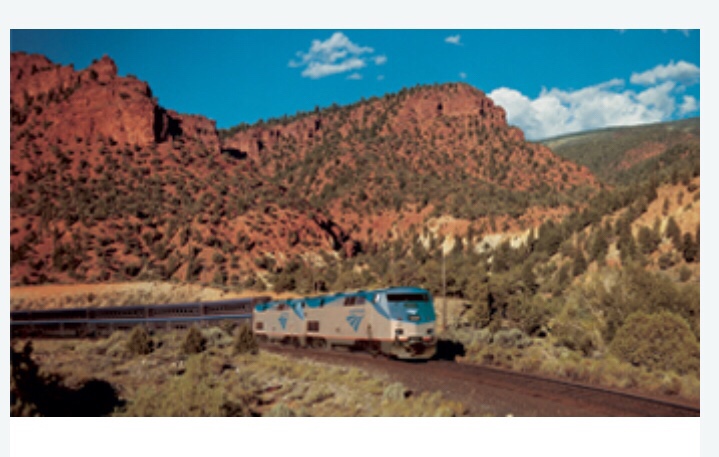Photographing the Journey
All those stunning photographs of Amtrak trains in scenic locations have a couple of things in common. Professional photographers most likely took them. And the photographers were not on the trains, but taking pictures of passing trains. It’s not so easy when you are on the train, but there are some things you can do to take excellent photographs.

Those pesky reflections
One challenge is to get rid of the reflections and glares. If you’ve every taken a journey on a train or even a tour bus, you’ve probably had the same experience as I have had. You take pictures out the window, download and look at them and suddenly see distracting giant reflections you never noticed before. Our brains have been conditioned to ignore the things that distract us, so we don’t initially notice those reflections.

On a scenic train journey, the observation or lounge car can be the best place to admire the view. But I’ve seen many passengers there snapping away with their fancy cameras or their smart phones. It is the worst place to get good photographs, in my opinion. All those windows magnify the bright reflections that can ruin your pictures.
A circular polarizing filter can sometimes help to reduce reflections and glare, but I can’t get it to eliminate them. And Amtrak’s side windows are polarized, so the filter gives me odd colors and distortions.
One way to eliminate window glare is to place your camera lens or smart phone flat against the glass, leaving no way for light to reflect back. That means you are taking a photo straight out the window, which isn’t ideal if you are trying to look up or down a canyon, for example. But with a digital camera, you can take lots of pictures and hope one or two are ideal.
Think creatively about any way you can block the light from coming between your lens and the window. In my roomette, I close the curtains and seal the gaps with the Velcro edges. I turn out all the lights, put the pillows and anything else white or light out of sight and wear dark clothes.
In coach or business class, you can put your camera between the window and the navy curtains. It works best if you – and the scenery – are on the shady side of the car. Cloudy days also help reduce the glare.
Taking better pictures
I’ve found some other tips that generate better photographs from the train. I like to think of the story I want to tell with my photographs. That means not just the scenery, but shots of the interior – my seat or roomette, the observation car and the dining car. When we have time to step off at a station, I get photos of the train, too.
One interesting shot is through the back window of the last car, typically a coach car. This window isn’t polarized, so I can use that filter if I want. I like the lines of the track disappearing behind the train. Also, while I am at the back, I sit by a window and take a picture of the train snaking ahead on a curve.
 That brings me to the map app on my smart phone. Even without cell service, it shows me our position. If I zoom in, I can see the track and determine where it is going to I can be ready when the train curves to one side or the other. By using satellite view, I can get an idea of when I might be more likely to see interesting views.
That brings me to the map app on my smart phone. Even without cell service, it shows me our position. If I zoom in, I can see the track and determine where it is going to I can be ready when the train curves to one side or the other. By using satellite view, I can get an idea of when I might be more likely to see interesting views.
 If you are using a camera with adjustable options, it helps to select the sports mode. That will increase the shutter speed, so you won’t have as much blur if the train is moving fast. You also can manually select shutter speed preference to set it yourself. With a little practice, you can slowly move your camera, keeping it pointed at the shot you want to take, to decrease blur.
If you are using a camera with adjustable options, it helps to select the sports mode. That will increase the shutter speed, so you won’t have as much blur if the train is moving fast. You also can manually select shutter speed preference to set it yourself. With a little practice, you can slowly move your camera, keeping it pointed at the shot you want to take, to decrease blur.
Don’t forget to shoot some video. With newer smart phones, you can grab a still image from your video, allowing you to choose the best composition.
Just as I was about to post this blog, Dawn Hewitt posted a link on the Facebook Amtrak Fans page to her blog post Capturing expressive photos when traveling on trains. I am sharing it because it also gives some great ideas from a different perspective.
I hope these tips help you come away from your trip with an album full of photographs. But don’t let an obsession with getting the perfect shot interfere with your enjoyment of the trip in the moment. There’s nothing wrong with relaxing and enjoying the view, storing it in your mental memory.

As usual I and traveling along via my computer and enjoying reading your blog! Julie